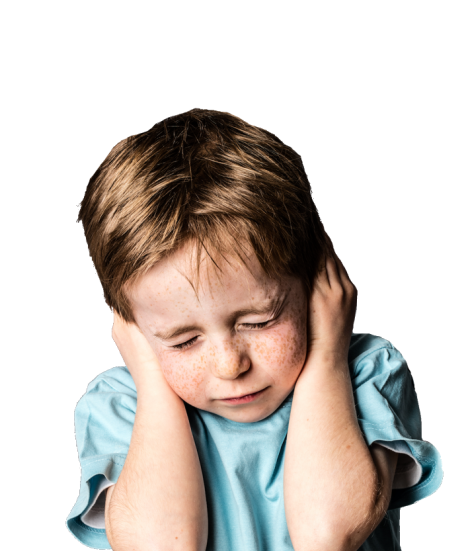Treating anxiety disorders that occur in childhood
Anxiety is a response to danger or threat. It is a normal emotion that can, in moderate degree and frequency, be a productive driving force that helps us to take action and achieve goals. For some children, anxiety can be overwhelming and persistent, often drastically interfering with daily life.
Estimates differ, but between 8-22% of children experience anxiety more intensely and more often that other children, stopping them from getting the most out of life. Fortunately, anxiety disorders are treatable and the majority of children with an anxiety disorder can be helped with the right professional care.
Childhood Anxiety Disorders Research Program
At Griffith University, we are conducting nationwide studies funded by Wellcome and the Medical Research Future Fund for children (7-12 years of age) with anxiety disorders.
About the program
The Griffith University Childhood Anxiety Disorders Research Program is located in the School of Applied Psychology at Griffith University, Brisbane South (Mount Gravatt). The purpose of the program is two-fold:
- To improve our understanding of the underlying cognitive, physiological, and neural processes that contribute to the development and maintenance of childhood anxiety, phobias, and related conditions; and
- To develop more effective treatments that target these processes in ways that are cost-effective and lead to long-lasting improvement
All aspects of assessment, diagnosis and treatment are conducted within the context of research, and in accord with the ethical guidelines established by Griffith University Human Research Ethics Committee (HREC). Research studies at the Griffith University Childhood Anxiety Disorders Research Program are funded by the Australia Research Council, the National Health and Medical Research Council, Australian Rotary Health, Queensland Health, and Griffith University.

Professor Allison Waters
Professor Waters has been running the Griffith University Childhood Anxiety Disorders Research Program since 2004, initially based at the Gold Coast and now based at Brisbane South (Mt Gravatt). During this time, more than 500 children between 4 and 13 years of age with high levels of anxiety have been assessed and/or treated through the Program using well-researched diagnostic and assessment tools and evidence-based treatments.
Publications and resources
Explore some of our recent publications and helpful resources
Book reading
Jessie and the Scaredy Cat Brain is a book written by Professor Allison Waters and illustrated by Sandy Flett. Follow this link to view a video of this book read.
Research program
The Griffith University Childhood Anxiety Disorders Research program offers specialised assessments for anxiety disorders in children. Assessments to determine if children meet criteria for anxiety disorders include comprehensive, structured interviews with one of our therapists and the completion of questionnaires by parents and children. These assessment procedures help us determine the type of anxiety disorder/s children are experiencing and whether children are eligible for one of our research projects.
Children (and sometimes parents) also complete research tasks that assess the cognitive, physiological, and neural processes underlying anxiety. These tasks help advance our understanding of what causes and maintains childhood anxiety and if our treatments are reducing anxiety by targeting these underlying processes.
Treatments
A number of treatment-related research projects are conducted at the Griffith University Childhood Anxiety Disorders Research Program. Treatments are based on cognitive and behavioural therapies, which have demonstrated efficacy for childhood anxiety disorders. Depending on the research project, these treatments involve a range of techniques including psycho-education about anxiety, corrective breathing and relaxation exercises, cognitive therapies that target attention to emotional stimuli and restructuring of anxiety producing thoughts, repeated systematic exposure to feared stimuli and situations, problem-solving and social skills.
Depending on the research project, these treatments may be delivered in individual and group formats for children and may include additional sessions for parents. Some treatments involve a single session of treatment while others may involved 8-10 weekly sessions. In some projects, children participate in treatment here at Griffith University while in other projects children receive computer-assisted treatment within their family home. Each study has its own entrance criteria, assessment methodology, and set of treatment interventions.